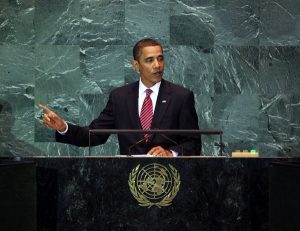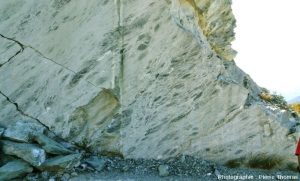
15 Jan What is the name of the United Nations rostrum’s background green stone?
The United Nations is headquartered in New York City, in a complex designed by Brazilian architect Oscar Niemeyer. The complex was constructed in stages with the core complex completed

between 1948 and 1952. It is located in the Turtle Bay neighborhood of Manhattan, on spacious grounds overlooking the East River. The US$8.5 million (adjusted by inflation US$84.7 million) purchase was funded by, John D. Rockefeller, Jr., who donated it to the city. But apart from these kinds of insipid information, what is the name of the stone behind the presidents standing on the rostrum?
It is likely this green marble was seen as an excellent design choice back then. This rock is known and marketed under the name of “antique green”, “Italian green marble” or “green Italy”. Such

blocks and slabs of serpentinites can be used to decorate the most common places and objects such as storefronts or veneers of our grandmothers’ (top of the range) stoves, but also the most prestigious places, such as the base from the tomb of Napoleon to the Les Invalides or the platform of the United Nations General Assembly in New York. The quarry is open in an ophiolitic sheet of the Franco-Italian western Alps above the town of Chatillon in the Valle d’Aosta.

Serpentinites are rocks composed predominantly of minerals of the serpentine family. They constitute a family of silicate minerals whose overall formula is (Mg, Fe)3 Si2O5(OH)4. The majority of them originate from hydrothermal alteration of ultrabasic rocks, and more particularly their olivine: Olivine [(Mg, Fe) 2SiO4] + H2O giving serpentine [(Mg, Fe) 3Si2O5 (OH)4] + magnetite
[Fe3O4 ] + brucite [Mg (OH)2] + H2 (unbalanced equation here).

This serpentinite is constituted by a “tectonic breccia”, a breccia of large serpentinite elements with beautiful schistosity/foliation, sometimes folded, large pieces in the form of spindles packed in a “matrix”, also serpentine but consisting of a “felting” of various minerals of the serpentine family. Sometimes the orientation of this felting is perfectly secant to the foliation of the blocks, and the limit is then very clear. These

serpentinites have therefore undergone at least three tectonic episodes: (1) a ductile deformation which has schistosed the rock; (2) a ductile deformation which has refolded this schistosity; (3) an episode of intermediate tectonics between brittle tectonics and ductile tectonics that “brecciated” the rock but slightly flattened the blocks.
